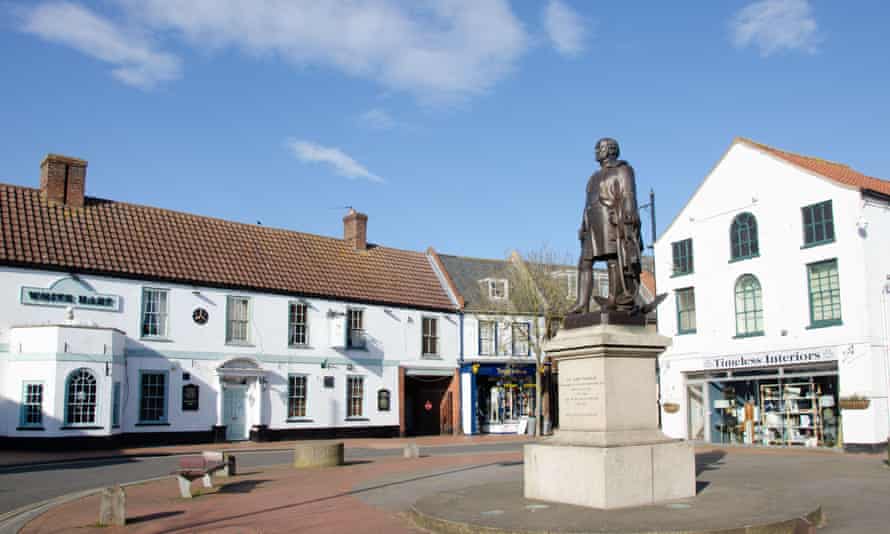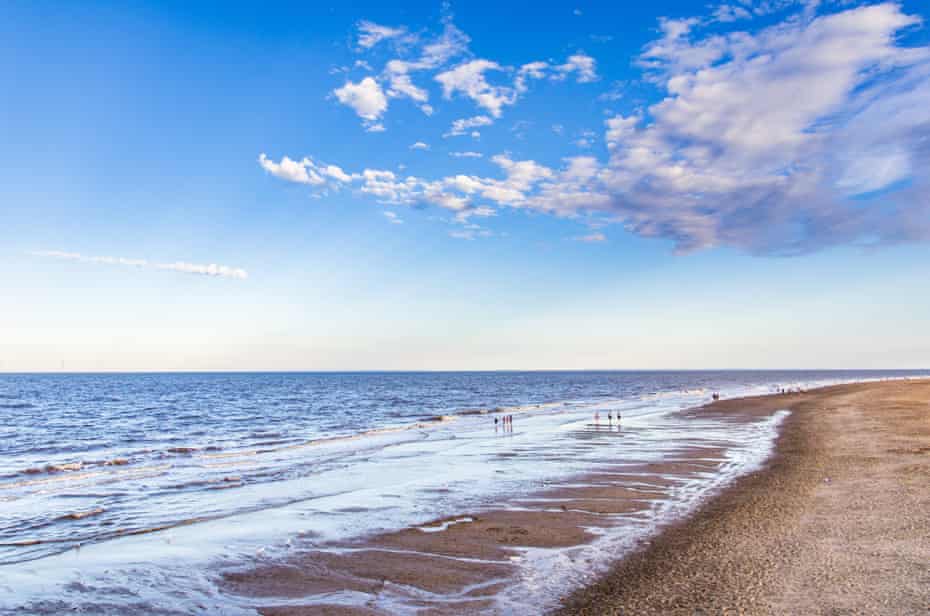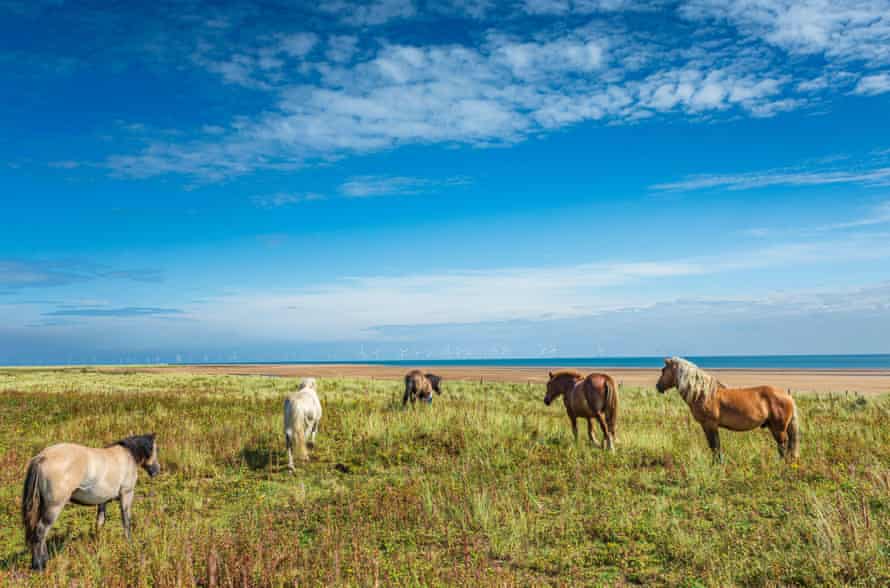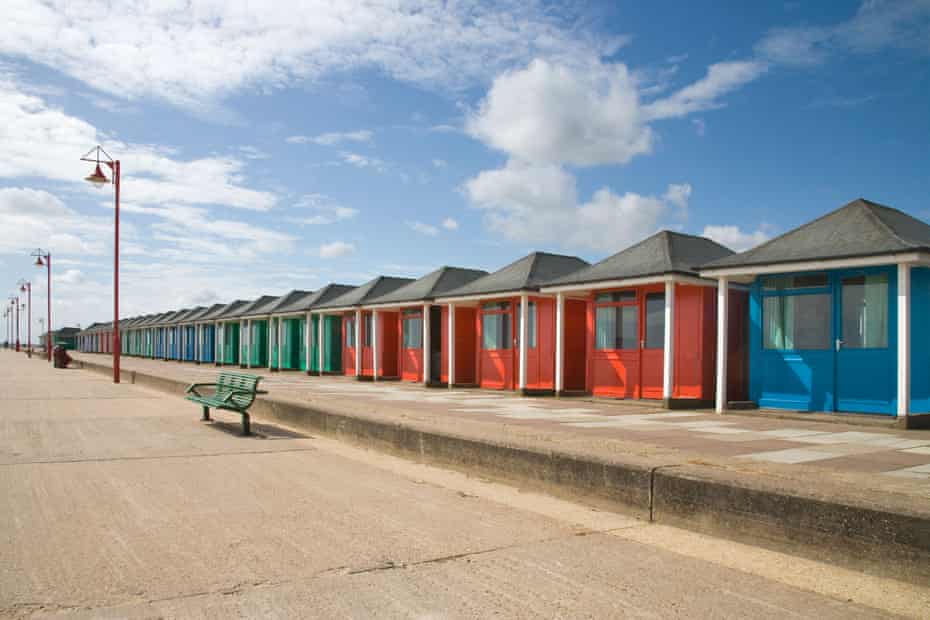There’s a ship passing seawards beyond the dyke, the New Old Sea Bank. This river, the Welland, flows through the town nearest to my childhood home, and here, after a long meander, it empties into the Wash and the North Sea.
This is not deja vu – I am returning to a place where I have never been. Back in the east Midlands, half a century ago, did I even know this was where the Welland ended up, in an almost featureless landscape?
In our Leicestershire village, when the seaside beckoned we headed east. There was something about this coast, the resort names with their awkward consonants, Skegness, Mablethorpe, Hunstanton, Ingoldmells, West Runton; something rather ordinary and laughable, a bit of a joke.
Now I think that to travel west is to seek out the future, and to travel east is to seek out the past. West is romantic, Arthurian, it’s where Frodo Baggins goes to transcend, and where they went to join the Gold Rush. In the UK, east is where the cold comes from, and it’s the edge that collapses into the sea. If it were a season it would be the end of August, not the middle of June. As it happens, it was at the end of August 2020 when I went east to mope a bit.
It wasn’t just the pandemic that was lowering my spirits, but it set the scene. All that distance, social and otherwise, dislocated us, even if some have recovered a taste for being alone. Our ambitions for travel have been dialled down. Now, in 2021, after more than a year of lockdown, we may be connecting again, but maybe not. When, last summer, I took advantage of a patch of relative Covid safety, I turned to my past and to the Fens.

It’s a good place to be alone. But there are other remote spots within our borders – so why here, in particular?
The answer is musical. I had been listening on YouTube, almost obsessively, to In The Fen Country, the tone poem by Ralph Vaughan Williams. It captures the brooding intensity of the land, bleak and level, the sense of space. There, in that country surely, just for a day or two, I could feel free of confinement. I could be liberated from the narrow adventure of isolation, now a bit much to bear, into the great adventure of being really alone. I hired a car and set out.
I made first for Spilsby, a quaint market town, handy for the coast and up the road from Boston, with its Stump tower. I checked in at the Beijing Dragon Hotel and set off immediately for Skegness in the declining light. This was my past, the landscape of those early family holidays. I parked by the shuttered Pleasure Beach and spent a long while surveying the North Sea. Then the late-summer light was gone, and I indulged in fish and chips and peas on the outdoor terrace of Tony’s Chippy. The lights, slightly misty, otherworldly; visitors sloping off to guesthouses and hotels… this was perhaps how I remembered those first excursions, but I didn’t yet feel that I had returned.

The next day, my southward drive took me nearly as far as the familiar-but-unassuming resorts of north Norfolk. I fetched up, though, in the crook of the Wash – the classic Fen landscape of dykes, watery channels, trees adrift on oceans of crops, abandoned pillboxes, enormous skies – and I walked for half a day in a rectangular circuit that brought me to the New Old Sea Bank. I had barely met half a dozen people all morning. Here there was enough distance to fill the soul for months ahead. As I neared the end of my long circuit the sky was an intense frown of cloud.
After lunch, I returned north and doubled back through Skegness to Gibraltar Point, a more managed coastal landscape of dunes and woods where the views were even more extreme. It’s a landscape so maximally minimal that it induces humility. Between the skies and the sand and the marsh of the flatlands is a thin strata of human activity. Out there somewhere was a military firing range and, just within sight, St Botolph’s – the Boston Stump.

On my second day, I made for the beaches, the backdrop to our holidays, and began my walk at Chapel St Leonards, recently highlighted by the Observer’s Laura Cumming in her memoir On Chapel Sands. The sands came later, after I had hiked north behind the dunes in a series of doglegs. The fields were sometimes sunlit – it was a walk not unlike those in the fields of my childhood, but with wheat or barley where there would have been potatoes and cabbage; and thankfully empty, except when the sea was just beyond the dune, and dogs and kids crowded the paths.
Lincolnshire cares for its dunes, and I had followed a sequence of new commissioned buildings along their edge. At Anderby Creek, I spent time on the Round and Round House tower, and with the Cloud Bar, trying to get its mirrors to reflect the sky. If the explanations on the board were accurate, we had a lot of passing cumulus and above that altostratus, adding up to a grey ceiling for a day’s recreation. By now the summer day was congealing a bit, the wind getting up, the sea lashed to brawling waves, and the horizon increasingly distant.

Once a joke to me, now I see all these places again – almost anew, somehow not: not as coarse and basic, but as primitive, powerful, pummelled, elemental. Maybe that is the lesson from all this: that my awkward childhood, silly, immature, ludicrous, was underpinned by a notable strength and distinction.
From Anderby Creek, I turned back along the sands where Tennyson, in his time, and Laura Cumming’s mother had walked, to pick up the car for a drive south for a friendly rendezvous. My break had coincided with the holiday of friends Barry and Sarah, who were staying in my other childhood holiday haunt, Mablethorpe. When I pulled into the Queens Square car park, the scene felt familiar. There was the boating lake, with motor-powered boats puttering along, Swan pedalos, and the bridge, so ordinary stylish, so plain, so east coast. The prospect along the promenade, with its central hall, also felt familiar, but the building probably wasn’t there 50 years ago. They had built up the sand to the height of the prom, Sarah told me – it once lay well below.

Sarah has seen Mablethorpe adapt over a span of family holidays, lasting, say, 40 years, and at least one of her childhood friends was there with her kids, as were Sarah’s parents – an extended family occupying a row of beach chalets. Just as at Chapel, where the caravan park is full of chalets and the chalet park is a maze of brick-built one-storied houses, these chalets are really huts. Sitting with Barry and Sarah by theirs, at ease on a folding chair in front of the North Sea, with a biscuit and a cuppa, rain in the distance, I’m not alone any more, I’m connected. This is the essence of east coast conviviality, and I belong with my new family more than I did with my blood-family in the 50s and 60s. Some confusion has passed – I came to be on my own, but now I can enjoy company.
I’ll be back here next year if they invite me. But I have had a lot of “alone” in the past two days and it has been epic, utterly memorable. Then the rain arrives, and I spend the wet evening seeking out a meal in Spilsby, giving the statue of explorer Sir John Franklin a nod. Tomorrow it will deluge again and the M62 will be a slog.




